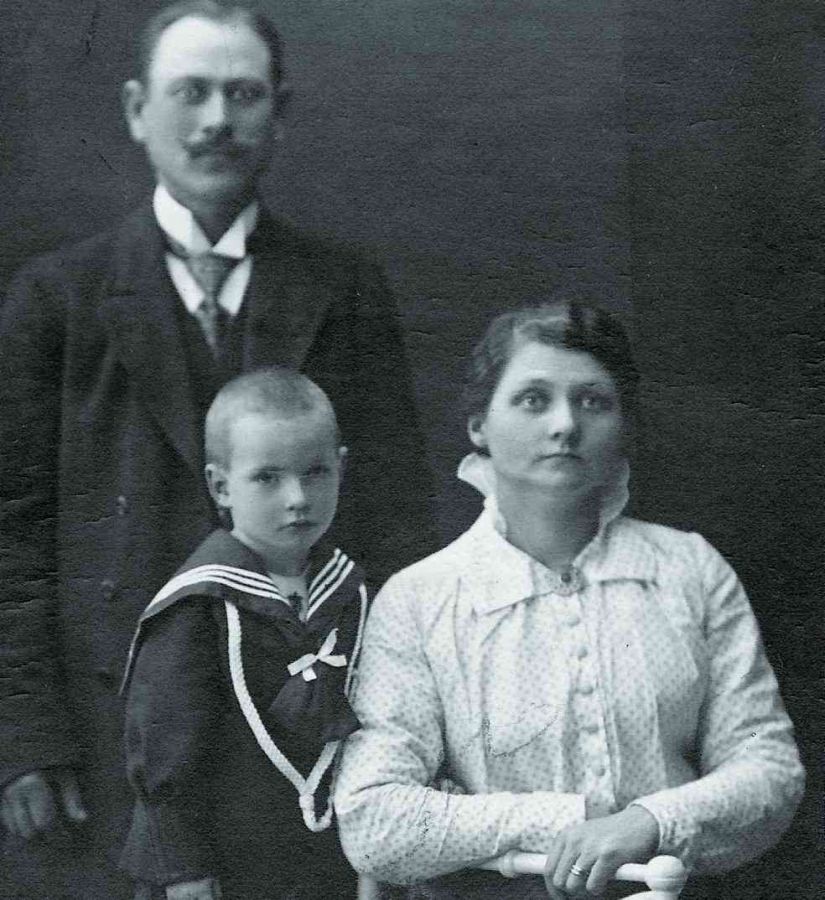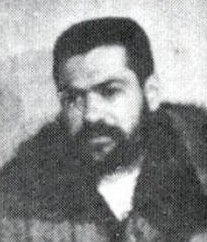A howling blizzard among the bleak scenery of a remote fishing town in Iceland. A police officer investigating a brutal murder. It’s probably enough to send a chill down your spine, but rest assured, it’s nothing but an extract from a mystery drama series “Trapped” (original title: “Ófærð”). After all, untamed Scandinavian wilderness is not only perfect for landscape photography, but also provides a suitably eerie setting for crime stories of the Nordic noir type.
Reality, however, is a bit more complicated. Although Icelandic police, Lögreglan, do their daily duties unarmed, Iceland’s 300 000 citizens legally own a total of 90 000 firearms! And yet there are virtually no crimes in Iceland involving the use of a gun. As for Sweden and Norway, they are generally perceived to be safe, an impression confirmed by relevant statistics, but they too have their bloody serial killers. Take for example Hilda Nilsson, known as "the angel maker on Bruksgatan". At the beginning of the 20th century, she murdered eight children and became the last woman in Sweden to be sentenced to death. In 2004, released from prison was Arnfinn Nesset, a Norwegian who’d served 21 years in prison for poisoning 22 residents of the old people’s home in which he worked.

Hilda Nilsson - "the angel maker on Bruksgatan"
Still further north
Even though we may expect crime to happen in Oslo or Stockholm, the areas beyond the Arctic circle are usually believed to be harsh but crime-free. Low population density should, after all, strengthen interpersonal bonds rather than provoke aggression, and cold temperatures should cool down fiery tempers. And although there might be places where people are stuck together in small spaces for long enough to arouse their worst instincts, these are mainly research stations staffed by level-headed scientists who surely know better than to murder each other. Still, extreme weather, extreme isolation and – worst of all – extreme monotony may occasionally push even the calmest individual over the edge.
Raisin wine, or how to hold a trial in space?
Let us focus on T-3 – a chunk of ice the size of Manhattan, also known as Fletcher’s Ice Island. On 16 July 1970, T-3, which was at the time floating in the Arctic Ocean north of Canada, was home to 19 scientists and technicians, who studied ocean currents and weather patterns.
Mario Escamilla was livid with fury. His colleague, Porky, had just stolen his jug of home-made raisin wine. This was the last straw for Escamilla. He was skinny, wore glasses and was generally seen to be quiet, even taciturn. And yet, quite out of the blue, 33-year-old Mario grabbed a rife and stomped out to regain his property. Unfortunately, Escamilla had no idea that the rifle he took was faulty. A single blow with a finger well off the trigger and a shot rang out. A fight broke out in which Escamilla shot not Porky Leavitt, but his boss, Bennie Lightsy. And the bullet went right through the man’s chest.
This silly tragedy gave rise to a major legal dispute – which country holds jurisdiction over a person accused of a murder committed on an ownerless chunk of ice drifting 240 km off the northern coast of Canada’s Ellesmere Island? And to push the dispute even further… Exactly a year before the incident, T-3 was the launching site for Apollo 11, which landed on the Moon four days later. The question arose, therefore, who would judge the first crime committed in space. None has been carried out yet, but – with Homo Sapiens being what he is – it is clearly just a matter of time.
Spoiler alert: the Antarctic
If stolen wine seems like a shameful motive for attack, it is by no means the most surprising. In October 2018, on the opposite side of the globe from the Fletcher’s Ice Island, Sergey Savitsky, a 55-year-old member of a research team which was spending Antarctic summer at Bellingshausen base on King George Island, lunged with a knife at his colleague Oleg Beloguzov, with whom he’d been working peacefully for the past six months. Beloguzov survived the attack, and the aggressor was clearly suffering from a nervous breakdown, but – as he himself asserted – his victim kept provoking him by… forever spoiling the ending of books he was reading.
It had long been no secret, however, that even cultured entertainment is no guarantee of personal safety. An article in the Canadian Geographer claims that 60 years earlier, at the Russian Antarctic Station Vostok, a lost game of chess drove an expedition member to such fury that he murdered his opponent with an axe. The article has it that playing chess was, as a consequence, banned at all Russian research stations (but neither the ban nor the actual murder has ever been confirmed).
The most lonesome continent on the planet may seem even safer than the polar regions of the north, but appearances are deceptive. The literary incident from 2018 was in fact preceded by a number of mysterious events of criminal nature, some of which remain unexplained to this day.
Rodney Marks was just on his way from an observatory to the main building of the Amundsen–Scott South Pole Station when he began to feel odd. Some uneasiness is to be expected when you’re surrounded by the polar night and bone-chilling cold, but it was definitely more than that. The 32-year-old astrophysicist had difficulty breathing and could barely see.
At 5:30 a.m. on 12 May 2000, Marks woke up vomiting blood. Trice he consulted the Station’s doctor Robert Thompson and with each visit his symptoms became more severe. His joints and stomach seemed on fire and his eyes were so sensitive he had to wear sunglasses even though the Sun had not risen for a good few weeks. As his physical condition deteriorated, Marks became increasingly distressed. He was, in fact, so anxious that the doctor started to suspect it might all be simply a panic attack. Finally, the man’s heart stopped. At 6:45 p.m., after 45 minutes of unsuccessful resuscitation, Thompson pronounced him dead.

Rodney Marks
As soon as the fight to save Marks’s life came to an end, 49 people staying at the Station faced a whole new problem: a dead body in one of the most remote places on Earth, at the time of year when it is too cold for planes to land. Months went by before the body of Rodney Marks left the Antarctic and 6 years before it became clear that he had probably been murdered. Someone has treated him to a lethal dose of methanol, but who did it and why? There were 49 suspects to consider and the mystery has never been solved.
Dodgy magnetism or what?
Could the planet’s changeable magnetic field be responsible for these bad emotions? It is, of course, highly unlikely, as living matter is not particularly susceptible to Earth’s magnetism and no relationship has ever been found between its changes and human behaviour. And yet the FBI agents and the mediator sent to two Antarctic stations – American McMurdo and Australian Casey – during the very same week of 1996 could hardly shake the feeling that something ominous was hanging in the air. At the McMurdo Station one of the cooks had attacked another with a hammer, while at Casey Research Station a rebellion had broken out! The incident, which looked a lot like a case of mass hysteria, involved 15 members of the Station’s staff.
Even though every polar expedition attracts crowds of applicants and many see it as a dream come true, the confrontation with the cold white nothingness may thwart even the most ambitious plans and shake the strongest individuals. And so in 1983, a Chilean doctor working at Argentinian Almirante Brown Antarctic Base gazed with ever-growing desperation at the Sun circling lower and lower above the horizon. The polar night was just behind the corner when the doctor suddenly realized he would not, after all, bear another winter in the Antarctic. So what did he do? He set the building on fire, which was a truly radical step as the Antarctic, dry and windy as it is, has no fire brigade or enough liquid water to put a fire out. As a result, both the doctor and the rest of the team had to be evacuated.
Without a trace, or the UFO and Soviet spies
Mysterious disappearances without a trace stir the imagination of home-grown detectives and fans of crime stories and conspiracy theories involving Soviet spies and the UFO.
On 8 May 1965, Carl Disch, an astrophysicist working at the American Byrd Station, left the observatory and headed for the main base, located a little over 1,5 km away. Snow blizzards could make the trip challenging, so a rope had been stretched along the entire route to make sure nobody gets lost. In difficult weather conditions, Carl should have made it to the base in 45 minutes. When he didn’t, his worried colleagues set out in search of him. They soon found Carl’s footprints, but – to their amazement – they did not lead along the safety rope, but headed straight towards… the icy nothingness. After a while, the footprints broke off. Carl’s body has never been found.
Was it an accident? A desperate, suicidal quest over the edge of nowhere? Rumour had it that Carl’s honour got the better of him after his companions had accused him of cheating in a game of cards. He allegedly announced that he was leaving to visit “some friends at the pole”, but nobody took the threat seriously.
The ongoing Cold War prompted speculation about espionage – perhaps Carl was a Soviet spy or was kidnapped by the Soviet secret service? There is no evidence to support the theory, but it is no secret that back then Antarctic research stations managed by rival superpowers often served as a cover for military activity. UFO enthusiasts, on the other hand, favour the hypothesis about alien abduction, fuelled by stories of “mysterious lights” observed near the Station about that time.

Carl Disch
Optimists claim that Carl left the Station of his own accord but did not perish in the wilderness, but somehow survived, which – bearing in mind local temperatures and wind speed – is, of course, utterly impossible. The fact remains, however, that in 1971 the McMurdo Station received the following message via the AA2 Weather Circuit: “To the world I am dead. They believe that my body is but a pinpoint frozen hard to the surface of this white continent. I say to you I, Carl Disch, live. Do not for one moment think that it was a mistake. Everything was planned. They pushed me, tormented me and bored me with their shallow lives. (…) At times the endless singing of the winds almost drives me mad: I begin to long for human companionship”.
It seems that the author (or authors) of the message decided to keep alive the hope cherished by those who still believed that Disch led a solitary life somewhere in the Antarctic, without supplies, clothes or fuel, building a legend of his own and Byrd Station.
The content of the message brings to mind another anecdote about Carl’s disappearance. Among his colleagues was a man by the name of Frank Recely, a very decent but unspeakably boring individual. One story has it that at some point Carl simply got up and left, unable to stand Frank’s ramblings any longer.
The end of the world at Belcher Islands
Incidents like the above, set at research stations, may suggest it is only scientists and the remaining station staff that – in the face of isolation, exhaustion, agoraphobia and claustrophobia, distorted daily rhythm, monotony, separation from the loved ones and forced coexistence with strangers – become prone to mental crises and outbursts of aggression, which may, in extreme cases, lead to tragedy. After all, records of polar “melancholy” come from as early as the 19th century, when it affected much of the crew of the famous Belgian Antarctic Expedition (1898–1899). As described by Frederick A. Cook: “The curtain of blackness which has fallen over the outer world of icy desolation has descended upon the inner world of our souls. Around the tables, in the laboratory, and in the forecastle, men are sitting about sad and dejected, lost in dreams of melancholy from which, now and then, one arouses with an empty attempt at enthusiasm”.[1]
Having said that, one of the weirdest and the most brutal crimes was actually committed in an Inuit community.
The winter of 1941 was harsh, very harsh, even for local standards. The Inuit inhabiting one of Belcher Islands, Northern Canada, spent their time huddling in igloos, with some poring over the pages of the Bible, brought over a few years before by traders and missionaries. Among the Bible readers was Charlie Ouyerack, 27, a sickly man enjoying a rather low status within his small community. Fate had it that just that winter came a meteor shower, which lit up the sky over the Arctic islets. Ouyerack had no doubt – it must have been what the Book of Matthew was about! “(…) the stars shall fall from heaven, and the powers of the heavens shall be shaken. And then shall appear the sign of the Son of man in heaven. And then shall all the tribes of the earth mourn, and they shall see the Son of man coming in the clouds of heaven with power and great glory”. So, he concluded, the world was coming to an end. The inconspicuous-looking and not overly respected Ouyerack responded to the revelation in a rather peculiar manner. He proclaimed himself Jesus (angakok – the shaman of the white man), and the best hunter on the island, a man by the name Peter Sal, became god. Both began spreading the word of a grand new life, free from dangerous hunts, tiring fishing, work or hunger. To start with, Charles and Peter had all the sled dogs killed. After all, soon all men were to possess the art of flying. In reality, however, killing the dogs meant no community member could now hope to escape.
When a young woman from the village, Sarah, questioned Peter’s divinity, he immediately declared her to be Satan, and her brother, a devout follower of both Peter and Charles, brutally murdered her. The girl’s sad fate was soon shared by two more sceptical non-believers. On top of that, Peter’s sister, Mina, drove six people, including her own mother, onto the ice covering the bay and forced them to strip naked so they could greet their saviour. All six were promptly killed by hypothermia. All in all, the cult – or should we say mass hysteria – claimed nine victims, four adults and five children, murdered by or with the approval of friends and family. Some authors still take the events as a case-in-point example of the destructive impact of the “white” civilization on native peoples. Others find in them behavioural patterns typical of the Homo Sapiens at large, exhibited among others during witch hunts, where hatred and the desire to exclude proved highly contagious, even without greed as an extra stimulus. The bloody events may also serve as a perfect illustration of the so-called shared psychosis (folie à deux), a phenomenon well-known to psychiatrists, when delusional beliefs appear in a close-knit group of people, who support each other in their madness.
Or maybe, every once in a while, the raw beauty of polar regions inevitably claims lives…
Author: Anna Wielgopolan
[1] Cook, Frederick A. as cited in Lawrence A. Palinkas, Peter Suedfeld, Psychological effects of polar expeditions, The Lancet, Volume 371, Issue 9607, 2008, pp. 153-154, ISSN 0140-6736, https://doi.org/10.1016/S0140-6736(07)61056-3.






